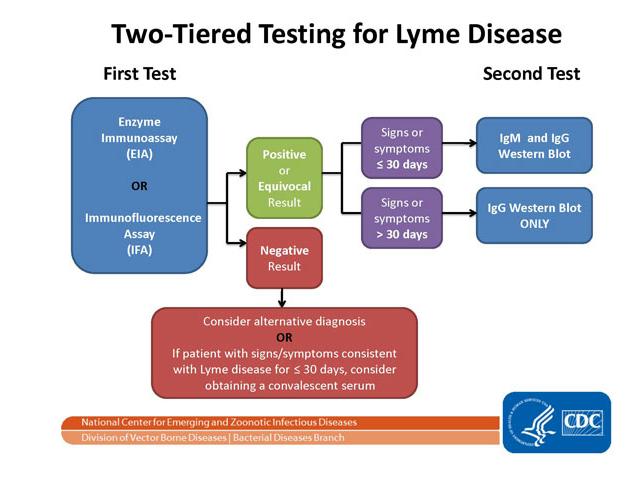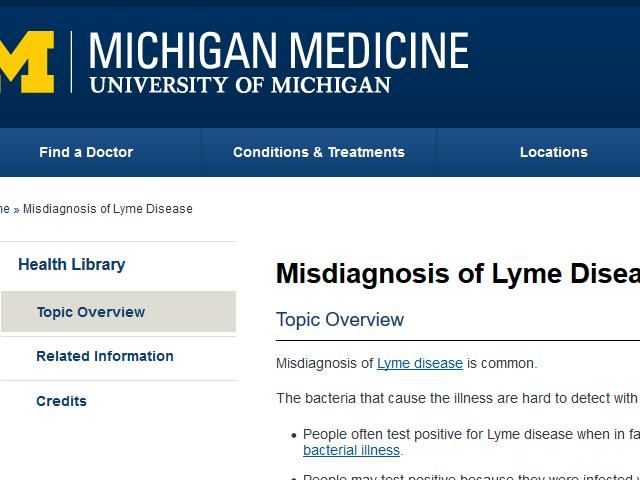GETTING A PROPER DIAGNOSIS
Two-step Laboratory Testing ProcessCDC currently recommends a two-step process when testing blood for evidence of
antibodies against the Lyme disease bacteria. Both steps can be done using the same blood sample. The first step uses a testing procedure called “EIA” (enzyme immunoassay) or rarely, an “IFA” (indirect immunofluorescence assay). If this first step is negative, no further testing of the specimen is recommended. If the first step is positive or indeterminate (sometimes called “equivocal”), the second step should be performed. The second step uses a test called an immunoblot test, commonly, a “Western blot” test. Results are considered positive only if the EIA/IFA and the immunoblot are both positive. For more details, see: Recommendations for Test Performance and Interpretation from the Second National Conference on Serologic Diagnosis of Lyme Disease. <Read More Here> |
Get answers, Get your life back. The Right Test Kit for YouMany tick-borne diseases can have similar signs and symptoms. If you know or suspect that you've been bitten by a tick, you should consult with a healthcare provider who can determine which lab test(s) may be required based on any symptoms you have as well as your potential exposure to geographic region where certain ticks and tick-borne diseases are prevalent, including Lyme disease. After determining the type of test required, you or your doctor can order a test kit directly from IGeneX. <Read More Here>
THIS IS THE ONLY TESTING LAB STW RECOMMENDS |
TEST A TICK!!!!
.If you are bitten by a tick and are able to remove it and send it in, or if you find one and aren't sure if you've been bit, IGeneX can test the tick to determine if it is carrying the pathogens that can lead to tick-borne illnesses. <click here for more info>
|
|
As a kid in rural Connecticut in the early 2000s, Kathleen McWilliams was well acquainted with the danger of ticks. After days spent playing outside in the wooded areas around her house, “our home routine was you brushed your teeth, you went to the bathroom, and you did a tick check,” she said.
So when, at age 15, McWilliams suddenly spiked a 104-degree fever, her mom immediately thought Lyme disease, the tick-borne illness caused by the bacterium Borrelia burgdorferi. She requested a Lyme test. While they waited for results, McWilliams’s symptoms morphed into near-constant dizziness and achy joints, two more markers of the disease. But, after two weeks had passed, they got surprising news: Her Lyme test came back negative. <continued> |
-Topic Overview-Misdiagnosis of Lyme disease is common.
The bacteria that cause the illness are hard to detect with current lab tests.
|




